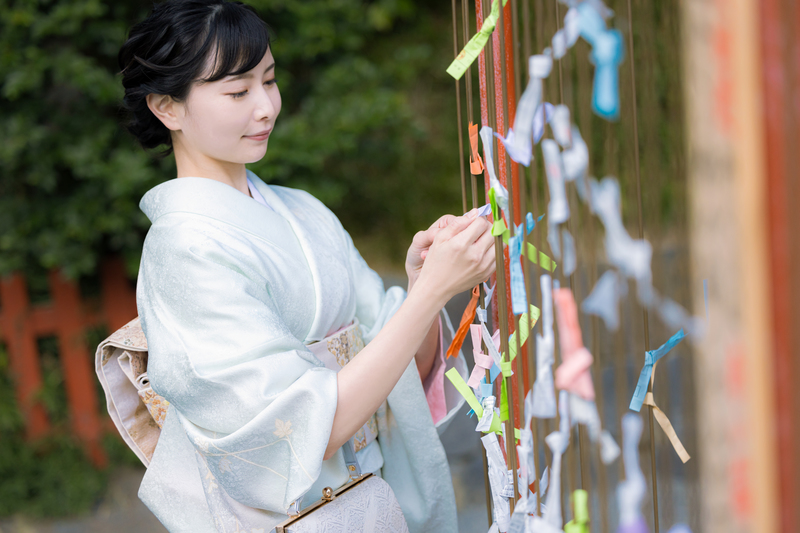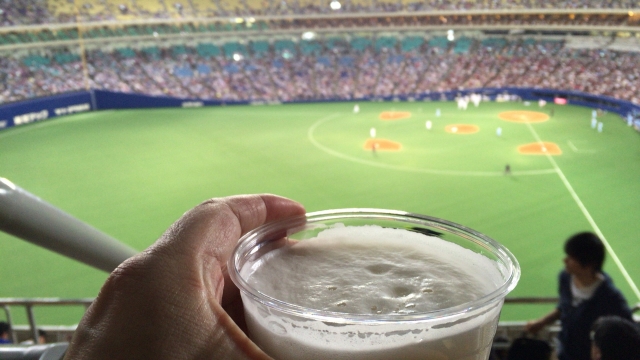When visiting shrines on New Year’s Day, Japanese people are tempted to draw omikuji. It is difficult to return home without drawing a fortune, and there is the pleasure of drawing it while anticipating what will come out.
However, if the contents are in cursive script, one may only see good or bad results and end up taking it home or tying it. In this page, I would like to examine various aspects of omikuji.

Click here to learn Japanese language with the best one-on-one Japanese tutoring lessons in person or online.
Contents
What is the meaning and origin of omikuji?
Omikuji” is expressed in Chinese characters.
- おみ籤
- お御籤(一般的)
- お神籤(神社のもの)
- お仏籤(お寺のもの)
- 御御籤
- 御神籤
- 御仏籤
The one that can be used reliably is 2. For those from shrines, use “お神籤” in 3. and for those from temples, use “お仏籤” in 4. for a more accurate representation. In Japan, since ancient times, “Kuji-Biki” was used to make important decisions concerning national festivals and to select successors to persons of high rank.
This is believed to be the origin of omikuji. And it is believed that the omikuji, now practiced at shrines and temples, was initiated by Ryogen, a priest of the Heian period (794-1185). Ryogen was a monk of the Tendai sect, generally known as Ganzan Daishi.
There are various systems of omikuji, and there are also automatic dispensers. The one I often draw from is the omikuji at Sensoji temple in Asakusa, Tokyo.
Here, you shake the omikuji tube to remove a stick-shaped omikuji from inside and receive a omikuji card from a box with the number written on the stick.The thrill of opening the box drawer to see if the omikuji is good or bad is unmistakable.

Order of Omikuji
The number of good or bad omikuji depends on the shrine or temple, but the following is a typical order of words.
- 大吉(だいきち) Daikichi
- 吉(きち) Kichi
- 中吉(ちゅうきち) Chukichi
- 小吉(しょうきち) Syokichi
- 半吉(はんきち)Hankichi
- 末吉(すえきち) Suekichi
- 末小吉(すえしょうきち) Siesyokichi
- 平(たいら) Taira
- 凶(きょう) Kyou
- 小凶(しょうきょう) Syoukyou
- 半凶(はんきょう) Hankyou
- 末凶(すえきょう) Suekyou
- 大凶(だいきょう) Daikyou
The order is considered good. However, this order is not absolute and varies from shrine to shrine and temple to temple. Therefore, in some cases, the position of good luck is lower. I don’t want to draw only “big bad luck.

Do you tie the omikuji you draw? Or don’t you tie it?
You often see drawn omikuji tied to tree branches and the like in the precincts of shrines.
This is a custom that has been practiced since the Edo period (1603-1868), as it is believed to bring good luck to those who tie their omikuji to the branches of a tree.
In recent years, an increasing number of shrines and temples have installed omikuji hangers (made of rope or sticks) because tying omikuji to trees is not good for growth. You can also tie them and take them home.
In my case, I draw a omikujiji and take it home if it has a “kichi” character. If I find it to be bad luck, I draw again. If it is still “bad luck,” I draw it again and again until I get “good luck.
Then tie all the bad luck stickies to a tree branch and take home only the good luck stickies. Then you will have a good year.
When you visit shrines on New Year’s Day, please try to draw omikuji too.
Summary
Omikuji is a lottery used to divine the fortune of things by praying at shrines and temples. Overall, omikuji include ookichi, chukyoshi, kichi, shokichi, and wickedness. In addition, omikuji are written for various other items such as academics, business, marriage, and victory.
Many people look forward to going to shrines on New Year’s Day and drawing omikuji. However, drawing omikuji is often done simply for fun, rather than to truly learn about one’s fortune. Omikuji are usually written and read on a long, thin piece of paper, which is then tied to a tree to pray for one’s wishes to come true.
Omikuji is said to have originated from the ancient “drawing of lots”.
Omikuji as practiced today at shrines and temples is said to have been started by Ryogen, a priest in the Heian period.
The number and order of the omikuji vary from shrine to shrine, but the basic order is: ookichi, kichi, chukichi, shokichi, hankichi, and wickedness.
It has been a custom since the Edo period (1603-1867) to tie drawn omikuji to a tree branch or other object.
Related article:










